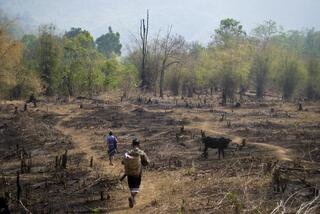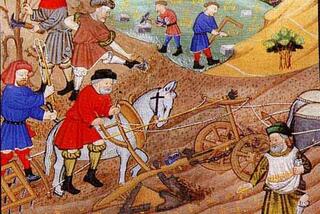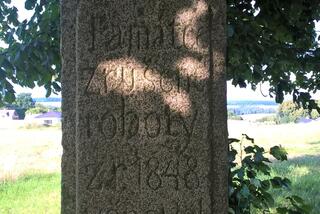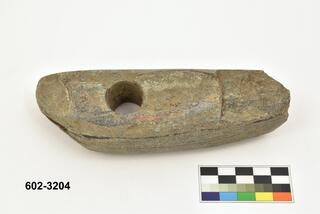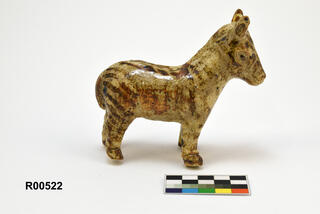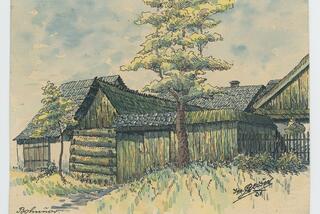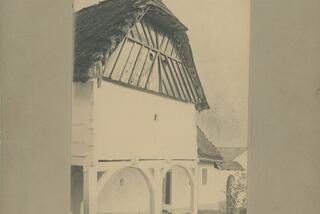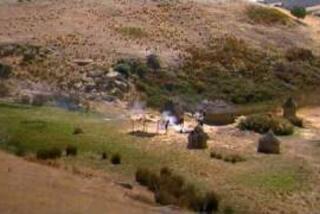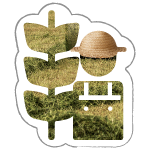
Traditional agriculture
Slash and burn
In order for the ancient farmers to obtain land suitable for cultivation, they first had to burn the original forest with fire. Burning natural vegetation required good organization to avoid significant damage to soil. Thanks to the fact that this soil preparation technique was preserved in remote areas until the middle of the twentieth century, we know that the fire was organized so that the burned vegetation burned as slowly as possible. Rather, it was a slow, human-controlled smoldering of organic matter that lasted several days. The burnt area could then be cultivated well, and in addition it was fertilized with the resulting ash.
Two-field agriculture
The beginnings of agriculture in Moravia were connected with two-field agriculture. This extensive economic system, which was developed in prehistoric times, was based on plowing and sowing land for 2 to 3 consecutive years. After that, the farmers of the time left the depleted land to rest sufficiently as fallow (for 3 to 10 years and in less fertile areas even longer). After the restoration of soil fertility, the whole cycle was repeated.
Three-field system
The gradual growth of the population and the associated relative lack of arable land in the 13th century forced a significant change in the way of agricultural management. The fields were unified into long strips, that were ideal for plowing. All land suitable for plowing was divided into three large soil blocks. The first was sown with grain in spring, the second in autumn and the third left fallow . At the same time, it was used for common cattle grazing. The following year, the previous fallow land was plowed and sown with spring-grain. Part of the fields sown in the previous year in the spring were now sown with winter-grain, and last year's winter -grain was left fallow, and so on. This system was maintained with minor improvements until the Industrial Revolution. Thanks to this, agricultural tools (such as a wooden spade with a chained tip) have been preserved to this day, which look exactly the same as in the medieval illustrations.
Changes in traditional field farming after 1848
The most significant changes in traditional agriculture began to occur after the abolition of forced labour. Farmers, who had become independent farmers on hereditary estates since the mid-19th century, were now much more motivated to adopt new knowledge that helped them increase the profitability of their farms. A number of popularization magazines on the topic of agricultural management began to be published. A number of peasant schools are also being established, including the one in Boskovice (1887), where the sons of farmers learned the latest knowledge in field cultivation.
Alternating agriculture
The need to make the most of all arable land since the second half of the 19th century has gradually introduced a four-pronged system of field cultivation, based on crop rotation and fertilization. The condition for this type of farming was the permanent housing of livestock and thus the acquisition of sufficient manure, which was fertilized in the autumn during the preparation of the field for root crops (beets, potatoes). The name of the root crop is derived from the frequent hoeing of these plants, which made it possible to minimize the occurrence of weeds. The root crops were followed by spring (barley, oats) and sowed (into the undersowing) clover, which fully developed after its harvest. Through its roots, the clover enriched the soil with nitrogen and was also an excellent feed for stabled animals. Winter (rye, wheat) was sown in the clover-prepared soil, which exhausted all nutrients to the maximum and the cycle, starting with fertilization, could be repeated.
The life of the first farmers in the world.

